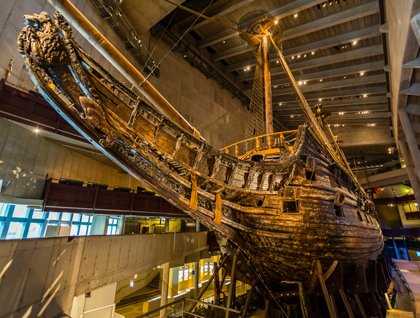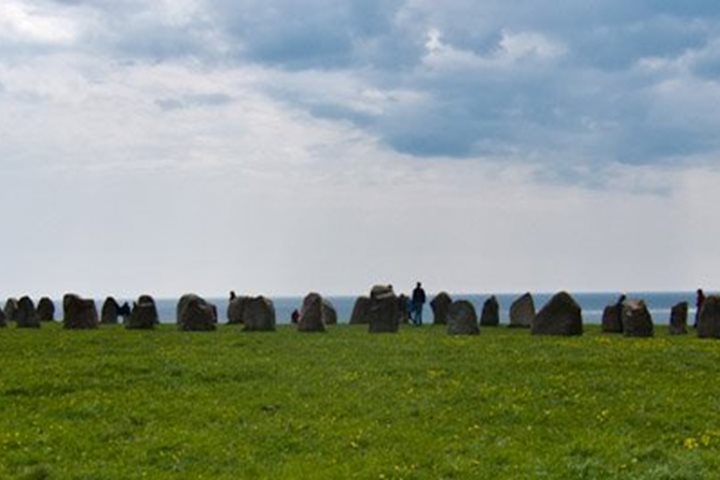We arrived early this morning, after a pleasant night’s sailing, on the outskirts of water-girded Stockholm. Many guests boarded Zodiacs for a slow cruise through Djurgarden Canal and on into the main harbor where National Geographic Explorer awaited us. On the way, we stopped for cinnamon buns and hot chocolate organised by a group of “Viking” hotel staff who were waiting to “ambush” us in a Zodiac.
The land lying to the left side of the waterway was originally established as a hunting park and abounds in woodland made up of native trees, including birch and cherry. The verdant foliage was reflected in the pond-still water. Kingfishers, herons and finches were spotted and bird calls resonated as we made our way along the canal. At every turn there was something to engage us. A city renowned for its built heritage and rich culture, we cruised past the Nordic, Maritime and Vasa museums.
Sited on a commanding hill is a reconstruction of one type of traditional vernacular farm dwelling for which the folk park, Skansen, is internationally famous. It was founded in 1891 by Arthur Hazelius and was the first of this type of open-air themed park in Europe. Many others have been established around the world since. Once back on board we had a well - earned breakfast.
The remainder of the morning in this northern city of fourteen islands was spent on a coach-based tour whose main focus was visiting the museum which houses the Vasa, a seventeenth-century war ship. Once inside we saw the newly upgraded short film detailing the historical background to the catastrophic maiden voyage and recovery of this remarkable vessel.
The Vasa was built between 1626-1628 under the orders of the then king of Sweden, Gustavus Adolphus, at the height of his country’s maritime power. The ship was unfortunately massively top heavy and was carrying insufficient ballast. With dignitaries and a full crew on board for the official launch of the vessel on August 10, 1628, the Vasa listed badly as she moved out into the open waters of Stockholm Harbour. Water poured in through the open gun ports and she quickly sank, having sailed less than a nautical mile. Incredibly, there were only a small number of fatalities.
In 1956 the location of the wreck was discovered by an amateur archaeologist, Anders Franzen, and plans were put in place to recover it. Using naval and commercial recovery equipment, the hull was brought back to the surface after 333 years. Excavation of the interior of the vessel and the sea bed recovered over 26,000 artefacts. A representative selection of these are sensitively displayed as are a number of human skeletons, victims of the ill-fated voyage. The ship itself was painstakingly conserved and reconstructed and forms the centre piece of the museum.
Afternoon activities included exploratory walking tours with local guides around the area of the city known as Gamla Stan, which was the core of the original medieval trading town, as well as visiting the Art and Sculpture Museum and the extensive open-air folk park of Skansen. An array of native mammals including wolverine, lynx, brown bear and moose are kept at the latter and offered guests the chance of engaging with these remarkable creatures who have lived in Scandinavia since post-glacial times.




.jpg?width=106&height=85&mode=crop&scale=both&quality=50)

